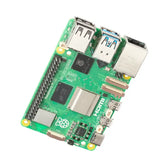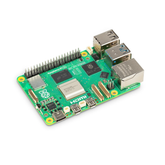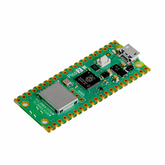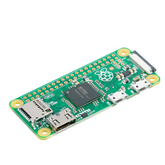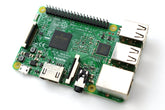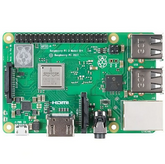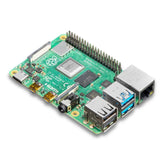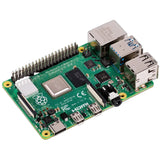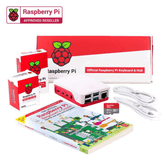Efficient and Sustainable Solutions with Raspberry Pi
Summary
Raspberry Pi’s latest manufacturing upgrade—intrusive reflow soldering—has accelerated board production, enhanced quality control and cut carbon emissions from soldering operations by more than a third. Coupled with broader green initiatives and long-term product support, these efforts reinforce Raspberry Pi’s commitment to efficient, eco-friendly computing that meets the needs of organizations seeking reliable hardware with a reduced environmental footprint.
Raspberry Pi’s Mission and Market Impact
Raspberry Pi was created to democratize access to computing, offering powerful, low-cost single-board computers that fuel innovation across education, research, industrial automation and the Internet of Things.
Since its 2012 launch, the platform has enabled millions of projects—from classroom coding exercises to commercial robotics—thanks to its combination of affordable pricing, extensive I/O options and a global developer community.
As edge computing and digital-transformation initiatives have proliferated, Raspberry Pi boards have gained traction in applications such as smart kiosks, remote monitoring gateways and proof-of-concept deployments.
Their small form factor and modular design simplify integrations while slashing the space, weight and energy requirements compared to traditional x86 PCs.
The Sustainability Imperative in Electronics Production

Conventional electronics manufacturing involves energy-intensive processes like wave soldering, thorough cleaning and extensive quality inspections, all of which contribute to greenhouse-gas emissions and resource consumption.
By embedding sustainability at the heart of its operations, Raspberry Pi turns green manufacturing into a strategic advantage, reducing waste, lowering operational expenses and aligning with customers’ environmental goals.
Intrusive Reflow Soldering: Precision and Performance
Traditional wave or selective soldering methods can introduce variability in joint quality and generate excess solder paste waste. Intrusive reflow soldering overcomes these challenges by:
Thermal zoning: Precisely controlling multiple oven temperature zones to ensure optimal heating and cooling profiles for each Raspberry Pi Board.
Laser-guided dispensing: Applying solder paste pad by pad with high accuracy, eliminating over-application and minimizing defects.
Retrofitting Raspberry Pi’s production lines with this technology has integrated process control and real-time inspection, delivering tighter tolerances and fewer reworks while boosting overall throughput .
Measured Efficiency and Carbon Benefits
Since implementing intrusive reflow soldering, Raspberry Pi has recorded:
A 20% increase in board throughput, accelerating order fulfillment and meeting rising demand more rapidly.
A 40% reduction in energy consumption per board, achieved through optimized temperature profiles and shorter oven dwell times.
A 35% drop in carbon emissions from soldering operations, cutting greenhouse-gas output at the source.
A 25% decrease in solder paste waste and scrap boards, lowering material costs and reducing landfill contributions.
These figures highlight how focused process improvements deliver both environmental advantages and operational efficiencies.
Integrated Sustainability Initiatives

Intrusive reflow soldering represents one pillar of Raspberry Pi’s comprehensive green strategy. Other key initiatives include:
Reduced material and shipping footprint: The compact design of Pi boards leads to a 98% reduction in shipping volume and uses up to 90% less water during manufacture compared to conventional desktop PCs .
Long-term support: Commitment to extended operating-system and firmware updates—such as guaranteed support for Compute Module 4 through at least 2030 and Raspberry Pi 5 until 2028—prolongs device lifespans and curbs electronic waste.
Energy-efficient hardware: Most Pi models operate on under 10 W even at peak load, allowing always-on deployments with minimal power costs.
Ethical supply-chain management: Suppliers comply with conflict-mineral regulations and ISO-certified quality standards, while carbon metrics for key components guide purchasing decisions toward lower-emission alternatives.
Take-back and recycling schemes: Community-driven programs facilitate the return and responsible recycling of end-of-life hardware, recovering valuable materials and preventing landfill accumulation.
Voluntary Carbon-Removal Partnership: As part of its sustainability initiative, Raspberry Pi provides an optional carbon removal credit in partnership with the environmental nonprofit UNDO.
Conclusion
Raspberry Pi’s adoption of intrusive reflow soldering and broader green initiatives highlights its commitment to sustainable, efficient computing. By cutting carbon emissions, reducing waste, and supporting long-term hardware use, Raspberry Pi provides organizations with reliable, low-power solutions that align with both performance goals and environmental responsibility. It's a smart choice for anyone looking to innovate while staying eco-conscious.



